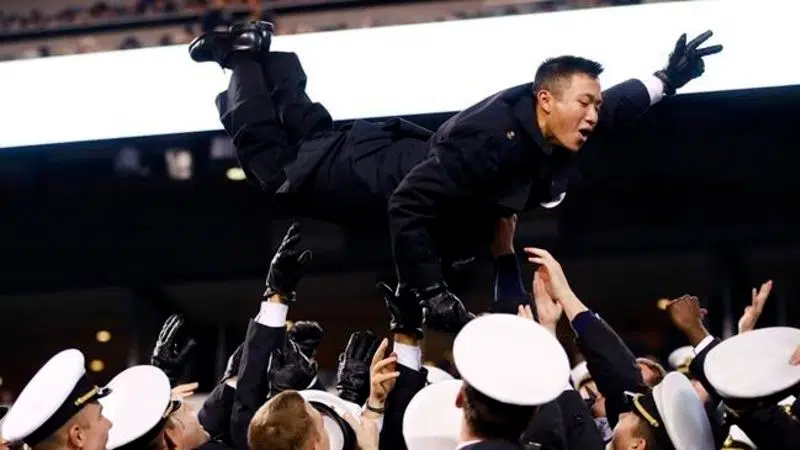
Hate sign or silly game? Military academies probe hand signs
When is OK not okay?
Some West Point cadets and U.S. Naval Academy midshipmen flashed what looked like a sideways OK finger gesture during a live television broadcast over the weekend at the Army-Navy football game. Now military officials are probing their intentions. Was it an affirmation? An innocent made-you-look “circle game?” Or a sinister white supremacy signal?
Screenshots and clips of the hand gestures captured by cameras at Saturday’s game in Philadelphia went viral on social media. Some Twitter users condemned the gesture as a “white power” sign. Others called it the “gotcha” or “circle game” popular with children, where someone flashes an upside-down OK sign below his waist and punches in the shoulder anyone who looks at it.
The circle game, around for generations, was featured in the early 2000s sitcom “Malcolm in the Middle” and has made a resurgence as a photobomb prank in sports team photos–along the same line as “bunny ears” fingers. In more recent years, it became an internet meme in a online game of “gotcha.”

